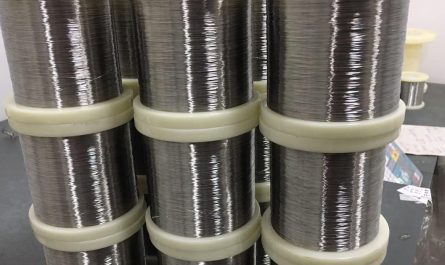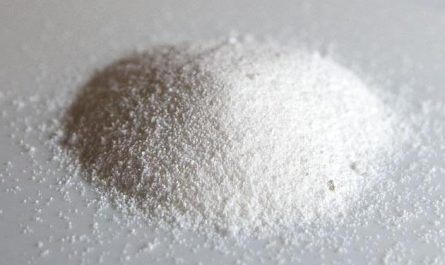Gas hydrates, also known as clathrate hydrates, are crystalline water-based solid structures that contain gas molecules trapped within hydrogen-bonded liquid-water molecules. Under specific conditions of low temperature and high pressure, such as in deep-sea oil and gas production, transportation pipelines and natural gas storage and transmission systems, there is a potential risk of gas hydrates forming and causing blockages. To prevent the formation of hydrates and ensure smooth operations in these systems, hydrate inhibitors are applied.
Types of Hydrate Inhibitors
There are different types of hydrate inhibitors used based on their chemistry and effectiveness. The major types include:
Thermodynamic hydrate inhibitors
These types of Hydrate Inhibitors work by altering the thermodynamic conditions required for hydrate formation. They modify the water-gas-ice equilibrium in pipelines and production systems to shift it away from hydrate formation. Common examples are methanol, monoethylene glycol (MEG), diethylene glycol (DEG), and triethylene glycol (TEG). They are readily soluble in water and lower the hydrate formation temperature or increase the equilibrium pressure. These inhibitors are widely used due to their effectiveness and cost efficiency.
Low dosage hydrate inhibitors (LDHIs)
These chemical formulations require much lower concentrations than thermodynamic inhibitors to provide inhibition. Common LDHIs contain polymers that get adsorbed onto the hydrate surface and prevent further crystal growth. Examples include polyvinylcaprolactam (PVCap) and polyvinylpyrrolidone (PVP). They are more environmentally friendly alternatives to glycol-based inhibitors.
Kinetic hydrate inhibitors (KHIs)
Unlike thermodynamic inhibitors, KHIs do not prevent hydrate formation but slow down the crystallization process. Common types are polymers containing amine groups that interfere with the water-gas interface and delay nucleation. Examples include poly(N-vinylacetamide) (PVAm) and poly(ethylene oxide)-poly(propylene oxide)-poly(ethylene oxide) (PEO-PPO-PEO) block copolymers. KHIs provide excellent hydrate inhibition at low dosages.
Anti-agglomerates
These help disperse hydrate particles and prevent agglomeration if hydrates form despite inhibition. Common examples contain poly(acrylamide) and other polysaccharides that adsorb onto small hydrate crystals and impart electrostatic or steric hindrance. This prevents hydrates adhering to each other or pipelines.
Applications in Oil & Gas Production and Transportation
Offshore Production Facilities
On offshore oil and gas platforms and FPSOs, hydrates can form in process equipment, flowlines and risers operating at low temperatures and high pressures. MEG is commonly injected as a thermodynamic inhibitor to control hydrate formation during production, processing and transportation of fluids from the wells to the platform.
Subsea Pipelines
Due to deeper water depths, longer subsea pipelines transporting produced hydrocarbons experience even lower temperatures and higher hydrate risks. MEG, LDHIs, and KHIs are often applied alone or in combinations to provide effective inhibition. Pipelines also use thermal insulation and heating to maintain higher temperatures above hydrate formation limits.
LNG Carriers
The low boiling point of liquefied natural gas at cryogenic temperatures of -162°C presents a major hydrate risk during storage and transportation in specially designed tankers. MEG or DEG is commonly mixed with the LNG as a hydrate inhibitor to prevent crystallization. High-dosage KHIs are also increasingly replacing glycols.
Onshore Gas Transportation
Vast networks of land-based transmission and distribution pipelines experience temperature fluctuations which can cause hydrates. Accordingly, MEG or LDHIs are continuously injected as a hydrate management strategy. Remote pipeline Hydrate Remote Monitoring and Control tools also aid in optimizing inhibitor usage.
Subsea Gas Storage
Underground salt caverns are used to store natural gas below the seafloor. Careful monitoring and dosage control of thermodynamic inhibitors like DEG is essential as the stored gas is subjected to hydration during pressure cycling operations.
Selection Criteria for Inhibitors
The type of inhibitor selected depends on several criteria including:
– Operating conditions of pressure, temperature, and fluid flowrates
– Economics and available budgets
– HSE and environmental regulations regarding discharges
– Ease of handling and injection systems compatibility
– Required effectiveness at lowest possible concentrations
– Effects on downstream corrosion and deposit formations
– Ability to function in presence of wellstreams, H2S and other impurities
– Synergistic benefits when used in combinations
Thus, both technical performance and feasibility determine the best hydrate inhibitor for different applications and processes in the oil and gas industry. Proper monitoring and chemical treatment programs are then implemented accordingly.
Gas hydrates pose major operational challenges in oil and gas systems if allowed to form. A variety of hydrate inhibitors have been developed to effectively manage this risk through thermodynamic or kinetic mechanisms. Selection of the appropriate inhibitor type involves considering the application conditions and balanced evaluation of technical, economic and safety factors. Widespread and optimized usage of inhibitors continues to ensure safe and reliable hydrocarbon production and transportation worldwide.
*Note:
1. Source: Coherent Market Insights, Public Source, Desk Research
2. We have leveraged AI tools to mine information and compile itHydrate Inhibitors
About Author - Money Singh
Money Singh is a seasoned content writer with over four years of experience in the market research sector. Her expertise spans various industries, including food and beverages, biotechnology, chemical and materials, defense and aerospace, consumer goods, etc. LinkedIn Profile


 by
by 


